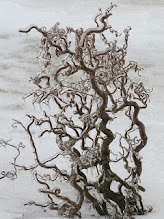HELLO MASTER GARDENERS!
Taking pictures for the Master Gardener 2022 Calendar? Below are the guidelines.
Don't forget winter photos or the first blooms, buds and shoots of spring.Here are the guidelines.
Tips for using your Smartphone cameraFiles should be 2 Mbs (6 mp on phones is 18 Mbs) or larger. Most cell phone photos are good. See Smartphone camera tips at the bottom.
A resolution of 300 dpi and a minimum size of 5"x7"
Try to include action photos.
If a MG is in the picture they should be wearing MG branded clothes.
Identifiable children need a parental release.
No staged photos - real interactions with the public. [Prob not much of this...)
1. Shoot in Landscape
- Rotating your phone to landscape mode and using the volume buttons to take the photo provides a more stable hold on the phone, reducing noise in your pictures.
2, Utilize the Grid Lines
- Locate this option in your photo app settings. Keep your main subjects off center so they become the focus.
3. Don’t Zoom!• Focus on the eyes• Place strong lines and divisions like the horizon on the gridlines
- Get up and personal with your subject for the best results. Most smartphone cameras have a digital zoom, but using this won’t help you get detailed pictures from far away. Zoom is just essentially cropping our picture on the screen.
- This allows you to explore different point of view.
• When taking pictures of small children or pets, get down on their level.
• Climb up and look down!
5. No Garbage Cans!
- You should also avoid cluttered or ugly backgrounds by changing your point of view. Watch out for the trash cans or other unsightly objects in your view.
6. Multiple Shots
- If you see something that catches your eye don't just take one shot and hope for the best. The chances of getting a good photo with your first shot are very slim. You should take shots from various angles and distances.
# # #
Check out the Herb Sampler on this Blog
SPECIAL Price reduction.























































